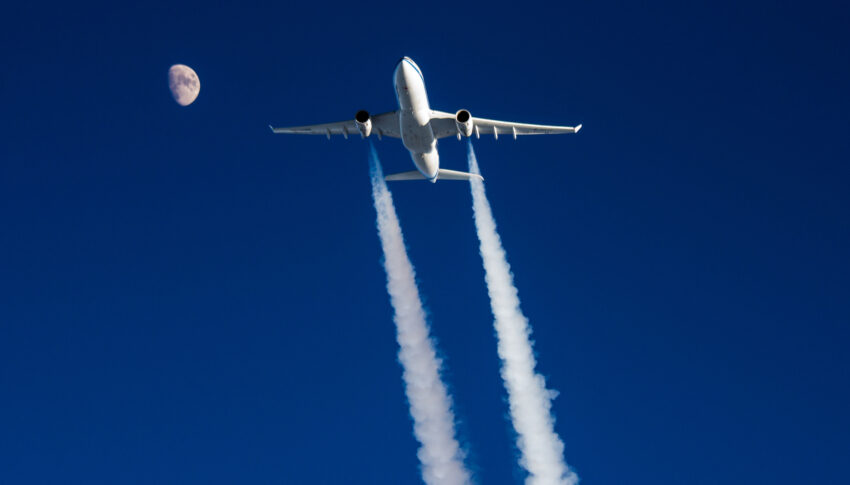Carbon dioxide emissions from aviation are well understood by now, and indeed the industry is coordinating efforts to become a net zero carbon emitter by 2050 or, in some cases, before. But what about the other kinds of emissions from aircraft, often high in the atmosphere, where some chemical interactions between the emissions and the surrounding air are different? Join us for the latest in our ab initio primer guides.
Beyond carbon dioxide (CO2), a 2020 report from the European Union Aviation Safety Agency highlights that “the non-CO2 impacts assessed by the experts arise namely from emissions by aircraft of oxides of nitrogen (NOx), soot particles, oxidised sulphur species, and water vapour. Their net impact is a warming effect on the climate, although there are a number of individual warming and cooling effects from the respective aviation non-CO2 emissions, with trade–offs and uncertainties of different degrees.”
As one example, oxides of nitrogen are not themselves climate warming agents, but their emission “results in changes in the chemical balance of the atmosphere to ozone and methane which have radiative impacts, quantified as a ‘net-NOx’ effect.”
Soot particles, meanwhile, spur the formation of ice particles, increase the size of crystals, and increase the lifetime of contrails, which themselves have a blanketing effect on warming. The relationship between contrails, the formation of non-natural cirrus clouds, and their effect on natural cirrus clouds, still requires substantial research, but could have an additional warming effect. The amount of soot particles depends strongly on the aromatic content of aviation fuels.
There are, however, “significant scientific uncertainties remaining in quantifying aviation’s non-CO2 impacts on climate”, the report states, noting that early scientific consensus suggests that the use of sustainable aviation fuels reduce soot particular emissions.
Across the pond, there’s close cooperation between scientists industry, government and regulators to reduce emission, James Heidmann, project manager of the Advanced Air Transport Technology Project at NASA’s Glenn Research Center, tells us.
“NASA, the FAA, DOE [Department of Energy], and EPA [Environmental Protection Agency] all play key roles in emission reduction, and work with industry partners such as Boeing, General Electric, and Pratt & Whitney on technology solutions to address emissions and climate impact,” Heidmann explains. “Boeing specializes in airframe and integration technologies, while GE and P&W specialize in propulsion technology. There is a long-time scale to changing technology on aircraft due to the long service life of aircraft, but engagement with new market entrants and incorporation of new technologies may facilitate the speedier introduction of new sustainable technologies.”
“NASA is working with industry and other government agencies to reduce carbon dioxide, oxides of nitrogen, particulate matter and other chemical emissions from aircraft as well as to reduce the noise of aircraft for local airport communities,” Heidmann says. “Solutions such as cleaner-burning, more efficient engines, more aerodynamically efficient airframes, and alternative sources of energy such as electrification and sustainable aviation fuels are key solution avenues.”
The EASA report recommended further research and potentially regulation of the levels of aromatics contained in fuels, which could potentially decrease the number of soot particles. This would need to be coordinated with enginemakers and fuel companies in particular, not least since some (especially older) engines rely on sulphur aromatics in fuel to make the materials in some seals swell.
EASA’s report also recommended additional research on how the non-CO2 impacts interact and how the tradeoffs between them work, including measuring emissions across flight stages and fuel types, as well as substantial research into the climate change impact of non-CO2 emissions. Lastly, it recommended that sustainability be factored into the further development of advanced air traffic management, including “ways to avoid ice-supersaturated areas and the formation of persistent contrails over the Atlantic airspace”.
It’s clear that much more research is required, and relatively swiftly — non-CO2 emissions could have two or more times the impact of the carbon dioxide emissions alone, so tackling them will be vital to aviation’s net-zero future.
Author: John Walton
Published 16th August 2022




